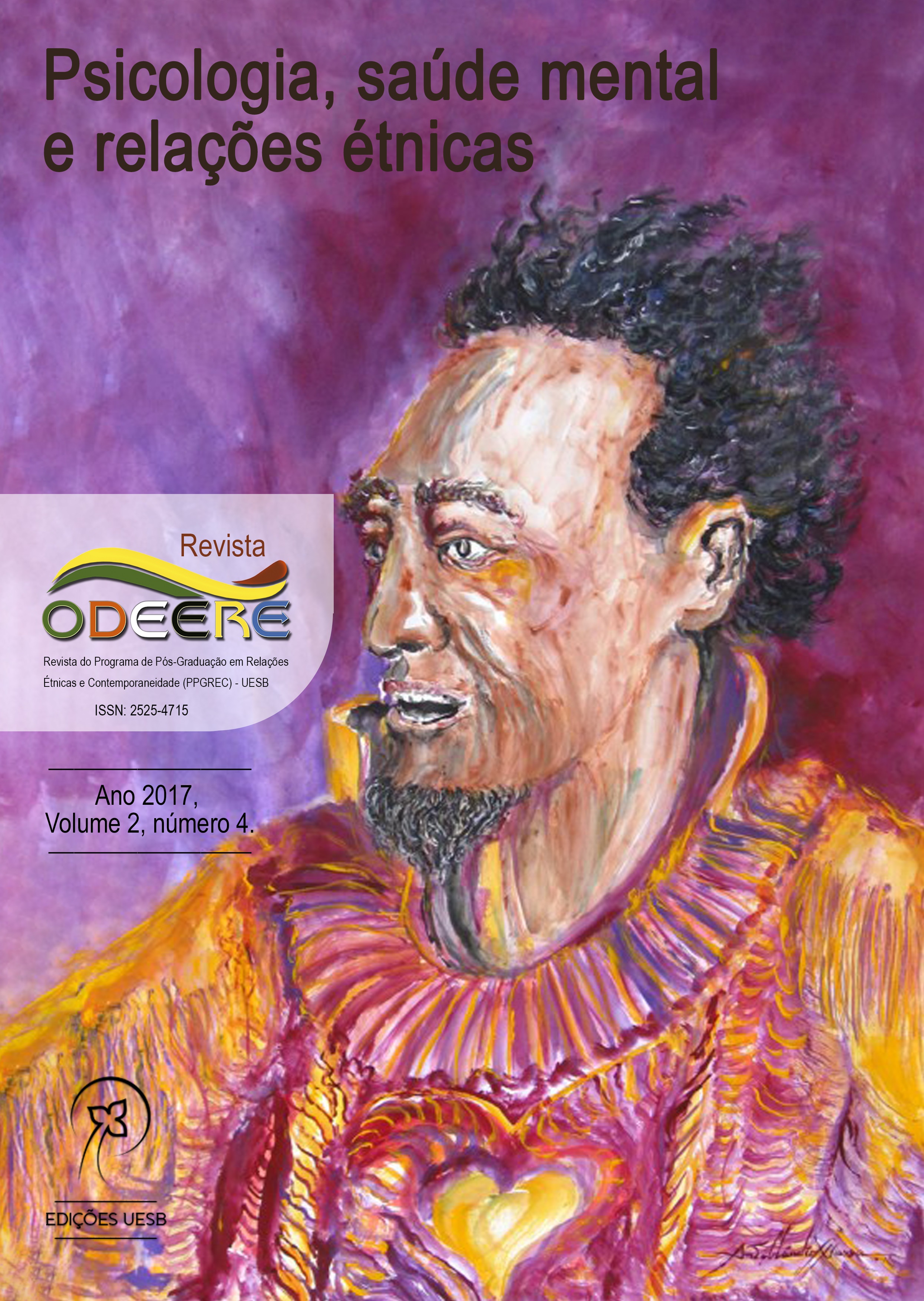Racism in the Family and the Construction of Blackness: Clashes and Limits Between Degradation and Positivation in the Constitution of the Subject
DOI:
https://doi.org/10.22481/odeere.v0i4.2366Keywords:
psicologia, mestiçagem, branquitude, identidade.Abstract
This article aims to address the impacts that the experience of racism within the family environment has on the subjectivity of individuals. It therefore addresses the ways in which this experience interferes in the formation of the subject's identity, in his self-image, and in the construction of self-esteem. These processes, multiple and complex, will be observed from the analysis of the story of the stories and life experiences of a person, Mariana. Although it deals with Mariana, through her voice, many others speak. Many Brazilian families are represented here in the painful experience of many women and men who have experienced racism since early childhood. Told and vivified by it, as well as interpreted in the light of the signifiers and meanings that it ascribes to these experiences, its account allows to think the psychosocial effects of the experience of the racial violence and the racism when it is lived by the black subjects in the familiar arrangements in which the white family is explicitly racist.
Keywords: psychology, mestizaje, whiteness, identity.
Downloads
References
ALVES, L. Significados de ser branco – a brancura no corpo e para além dele. Dissertação de Mestrado, Departamento de Educação, Universidade de São Paulo, São Paulo, 2010. https://doi.org/10.11606/d.48.2010.tde-14062010-153851
COSTA, J. F. Violência e Psicanálise. Edições Graal, Rio de Janeiro, 1984.
DU BOIS, W. E. B. The Souls of Black Folk. Barnes & Noble, New York, 2003.
FANON, F. Pele Negra, Máscaras Brancas. Fator, Rio de Janeiro, 1980.
FERREIRA, R. F. Uma história de lutas e vitórias: a construção da identidade de um afrodescendente. Tese de Doutorado. Instituto de Psicologia, Universidade de São Paulo, São Paulo, 1999.
FREEMAN, E. H. The Color of Love: Racial Features, Stigma, and Socialization in Black Brazilian Families, 2015.
GOMES, N. L. Corpo e cabelo como ícones de construção da beleza e da identidade negra nos salões étnicos de Belo Horizonte. Tese de Doutorado. Universidade de São Paulo, São Paulo, 2002.
HOMI BHABHA. O local da cultura. Trad. Myriam Ávila, Eliana Lourenço de Lima Reis e Gláucia Renate Gonçalves. 4ª Reimpressão. Editora da UFMG. Belo Horizonte, 2007.
MOUTINHO, L. Razão, cor e desejo. Editora da UNESP, São Paulo, 2004.
NOGUEIRA, I. B. Significações do corpo negro. Tese de doutorado. Instituto de Psicologia, Universidade de São Paulo, São Paulo, 1998.
SCHUCMAN, L. V. (2012). Entre o “encardido”, o “branco” e o “branquíssimo”: raça, hierarquia e poder na construção da branquitude paulistana. Tese de doutorado. Instituto de Psicologia, Universidade de São Paulo, São Paulo, 2012. https://doi.org/10.11606/t.47.2012.tde-21052012-154521
SILVA, N.V. “Distância social e casamento inter-racial no Brasil”, in Estudos Afro-Asiáticos, n.14, 1987.
SOUZA, N.S. Tornar-se Negro: as Vicissitudes da Identidade do Negro Brasileiro em Ascensão Social. Graal, Rio de Janeiro, 1983.
SZYMANSKI, Heloisa. “Práticas Educativas Familiares: a família como foco de atenção psicoeducacional” in Rev. Estudos de Psicologia, PUC-Campinas, v. 21, n. 2, p. 5-16, maio/agosto 2004. https://doi.org/10.1590/s0103-166x2004000200001
TELLES, E. Racismo à brasileira. Lumará, Rio de Janeiro, 2003.
Downloads
Published
How to Cite
Issue
Section
License
Copyright (c) 2021 ODEERE

This work is licensed under a Creative Commons Attribution 4.0 International License.
You are free to:
Share - copy and redistribute the material in any medium or format; Adapt - remix, transform, and build from the material for any purpose, even commercially. This license is acceptable for Free Cultural Works. The licensor cannot revoke these freedoms as long as you follow the terms of the license.
Under the following terms:
Attribution - You must appropriately give credit, provide a link to the license, and indicate if any changes have been made. You may do so in any reasonable way, but not in a way that suggests that you or your use is endorsed by the licensor.
There are no additional restrictions - You cannot apply legal terms or technological measures that legally restrict others to make any use permitted by the license.














